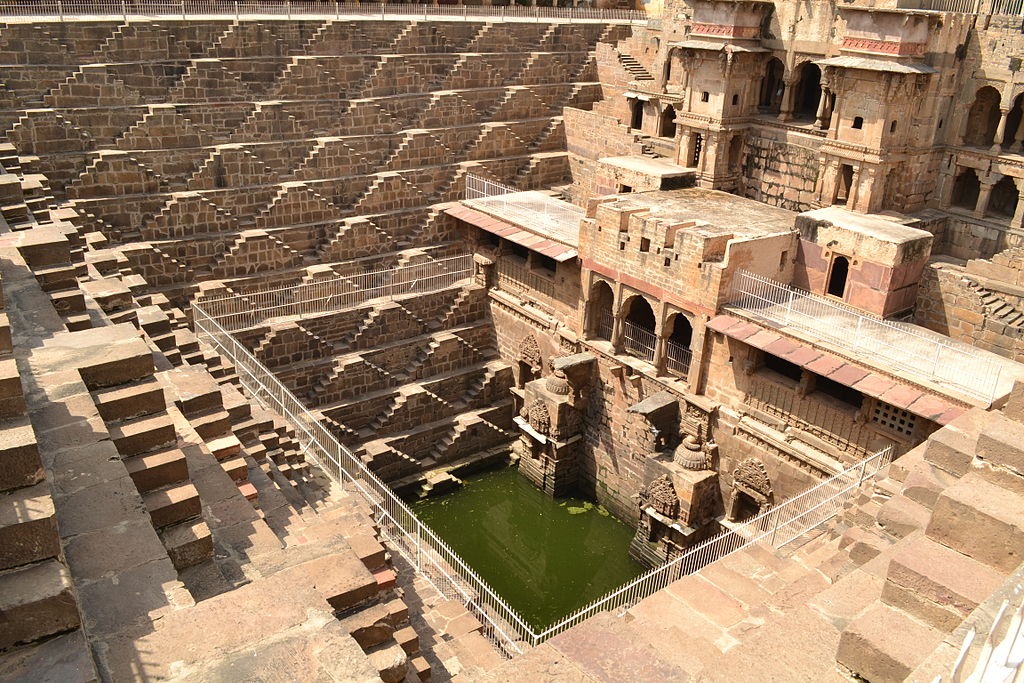Long before modern plumbing and water tanks, ancient civilizations devised ingenious ways to store and manage water. Among the most remarkable of these are stepwells—subterranean structures that combine utility with art, engineering, and sacred design. Mostly found in India, stepwells once provided communities with year-round access to water while serving as cool retreats and places for social gatherings. Their ornate carvings and dizzying geometry make them architectural wonders worth knowing about. Here are five ancient stepwells that still stand as stunning examples of human ingenuity.
1. Rani ki Vav, Gujarat, India
Rani ki Vav, or the Queen’s Stepwell, is one of the most famous and breathtaking stepwells in the world. Located in Patan, Gujarat, this 11th-century masterpiece was built by Queen Udayamati in memory of her husband, King Bhima I of the Solanki dynasty. Unlike most stepwells designed simply for utility, Rani ki Vav was built like an inverted temple, showcasing exquisite carvings of Hindu deities, apsaras (celestial dancers), and intricate motifs.
Stretching over 64 meters in length and descending seven levels, this UNESCO World Heritage site remains one of India’s finest examples of subterranean architecture. The stepwell was rediscovered in the 1940s after being buried under silt for centuries and restored to its former glory.
2. Chand Baori, Rajasthan, India
Chand Baori in the village of Abhaneri near Jaipur is perhaps the most visually striking stepwell. Built over 1,200 years ago by King Chanda of the Nikumbha dynasty, Chand Baori is a maze of more than 3,500 narrow steps arranged in perfect symmetry on three sides, plunging about 20 meters deep.
This stepwell not only collected water for the dry Rajasthan region but also served as a gathering spot and cool refuge from the desert heat. At the base, the air remains 5 to 6 degrees cooler than the surface—an example of practical climate design that still fascinates architects today.
3. Agrasen ki Baoli, Delhi, India
Tucked away in the heart of modern Delhi, Agrasen ki Baoli is a historical oasis surrounded by the city’s urban sprawl. Believed to have been built during the time of Maharaja Agrasen around the 14th century, this 60-meter-long and 15-meter-wide stepwell has 108 steps leading down to the water.
Agrasen ki Baoli is famed for its haunting beauty and perfectly aligned arched niches. While no longer used for water storage, it has become a popular stop for history lovers and photographers—and even has a reputation for being one of Delhi’s most haunted spots.
4. Adalaj Stepwell, Gujarat, India
Adalaj Stepwell, near Ahmedabad, is another jewel of stepwell architecture. Built in 1499 by Queen Rudabai, this five-story well is a stunning blend of Hindu and Islamic styles, reflecting the cultural mix of Gujarat’s history.
What sets Adalaj apart is its octagonal design and the delicate stone carvings that cover its pillars, walls, and balconies. Myth and history say it was built after the king who started its construction was killed in battle. His widow, Queen Rudabai, completed the stepwell with the help of the Muslim ruler who defeated her husband, on the condition that she would marry him afterward. She finished the project but ended her life before the marriage could happen, leaving behind a symbol of devotion and architectural wonder.
5. Panna Meena ka Kund, Rajasthan, India
Less famous but equally fascinating, Panna Meena ka Kund sits quietly near the Amer Fort in Jaipur. Built in the 16th century, this stepwell is unique for its zig-zag stair pattern that creates mesmerizing geometric symmetry. Local legend says you cannot climb down and return using the same set of steps—try it and see if you can break the myth!
Beyond its visual charm, Panna Meena ka Kund once served as a community hub where villagers gathered, fetched water, and escaped the heat.
Preserving These Underground Wonders
Stepwells are more than water storage—they are a blend of architecture, art, history, and climate wisdom. Today, many are threatened by neglect or encroaching urban development. Restoring and protecting them means keeping alive ancient engineering secrets and the stories carved in every stone.
Next time you explore India or read about ancient architecture, remember these underground marvels—proof that sustainable design and stunning beauty can exist hand in hand, centuries before modern tools made them easy.








